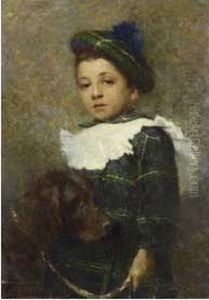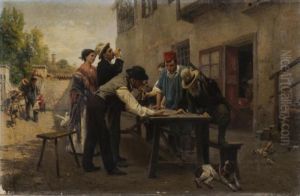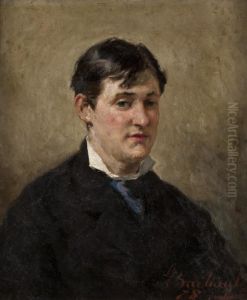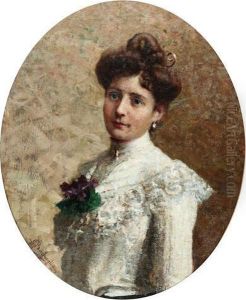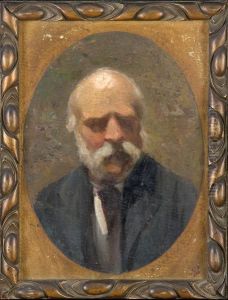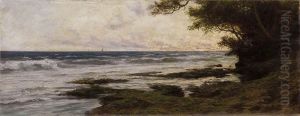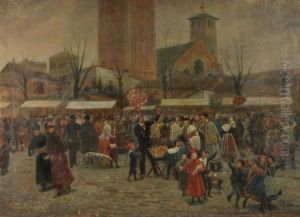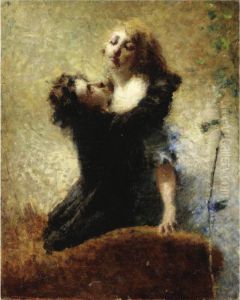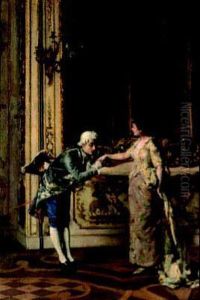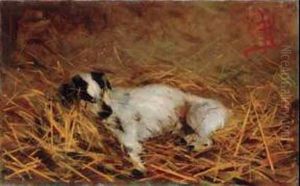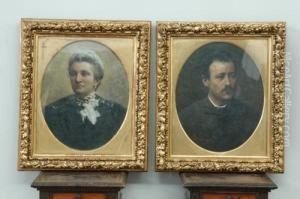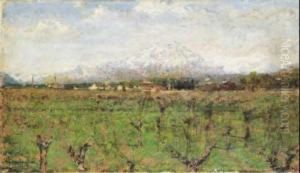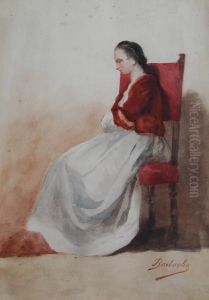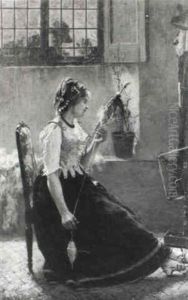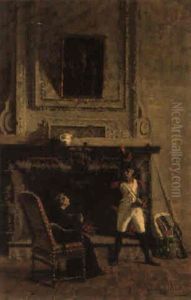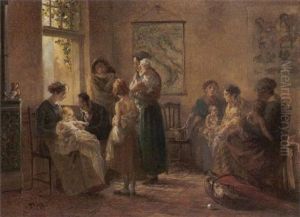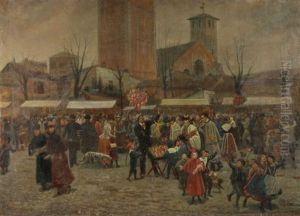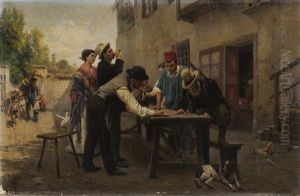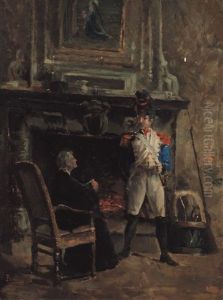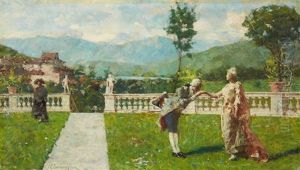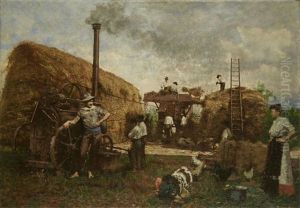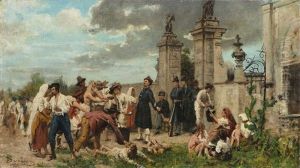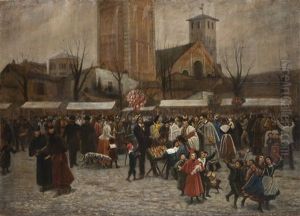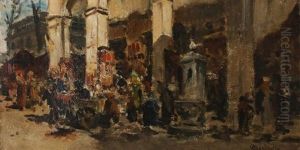Giuseppe Barbaglia Paintings
Giuseppe Barbaglia was an Italian painter, born in 1858 in Milan, Italy, and passed away in 1941. He is best known for his contributions to the Italian art scene during the late 19th and early 20th centuries. Barbaglia's artistic journey began at the Brera Academy in Milan, where he studied under the guidance of renowned artists such as Giuseppe Bertini and Francesco Hayez. This foundational education not only honed his technical skills but also instilled in him a deep appreciation for the nuances of human emotion and the beauty of the natural world, themes that would permeate his later works.
Barbaglia's style was primarily influenced by the Realist movement, which sought to depict subjects with truth and accuracy. However, he also embraced aspects of Impressionism, particularly in his use of light and color, which added a vibrant, almost ethereal quality to his paintings. His subjects varied widely, including landscapes, genre scenes, and portraits, all marked by a meticulous attention to detail and a profound sense of empathy for his subjects.
Throughout his career, Barbaglia enjoyed considerable success and recognition. He participated in numerous exhibitions, both in Italy and abroad, and his works were celebrated for their technical excellence and emotional depth. Notably, he was a regular contributor to the Milanese Brera Academy's annual exhibitions, where his paintings were met with critical acclaim.
Despite his achievements, Giuseppe Barbaglia remains a somewhat underappreciated figure in the pantheon of Italian artists. His dedication to realism and emotional authenticity, at a time when many of his contemporaries were pursuing more avant-garde approaches, may have contributed to this relative obscurity. Nevertheless, his contributions to Italian art continue to be recognized by art historians and collectors, who admire his skillful blending of realism and impressionist techniques to capture the beauty and complexity of the world around him.
Barbaglia's legacy is preserved through his works, many of which are housed in museums and private collections across Italy and beyond. As an artist, he left behind a rich tapestry of paintings that continue to captivate and inspire, offering a window into the soul of late 19th and early 20th century Italy.
